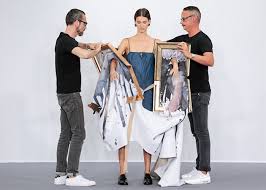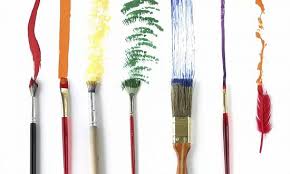realistic depiction
RUSSIAN ACADEMY OF ART OF ST. PETERSBURG (part 1)
 In 2007, the Russian Academy of Arts celebrates its 250th anniversary. November 17, 1757 (old style – November 6) – The governing Senate of the Russian Empire adopted a decree on the establishment of the “Academy of the Three Noble Arts.” In fact, such an institution in Russia was conceived much earlier, and by that time it had been successfully operating for at least thirty years. The idea of establishing a community of artists was expressed by Peter the Great and his close associates in the 1690s. After visiting the first emperor of Paris and the French academies in 1719, this idea took on a concrete form, but for many cases Peter the Great signed the necessary decree only shortly before his death, December 22, 1724. He proclaimed the creation of a single “Academy of Sciences and Arts” – a fact that is very important today, since the Russian Academy of Arts cherishes the fact that it was born simultaneously with the Russian Academy of Sciences and has been cooperating with it for almost three centuries. Continue reading
In 2007, the Russian Academy of Arts celebrates its 250th anniversary. November 17, 1757 (old style – November 6) – The governing Senate of the Russian Empire adopted a decree on the establishment of the “Academy of the Three Noble Arts.” In fact, such an institution in Russia was conceived much earlier, and by that time it had been successfully operating for at least thirty years. The idea of establishing a community of artists was expressed by Peter the Great and his close associates in the 1690s. After visiting the first emperor of Paris and the French academies in 1719, this idea took on a concrete form, but for many cases Peter the Great signed the necessary decree only shortly before his death, December 22, 1724. He proclaimed the creation of a single “Academy of Sciences and Arts” – a fact that is very important today, since the Russian Academy of Arts cherishes the fact that it was born simultaneously with the Russian Academy of Sciences and has been cooperating with it for almost three centuries. Continue reading
EXCURSION TO THE WORLD OF PAINTING (part 1)
 Painting, according to the apt remark of the artist K. Yuon, is “a living letter or a letter about the living”. At first glance, this may seem paradoxical: after all, living writing and writing about living things are not the same thing. But in this case, the paradox of this statement is only apparent. With the words “letter about the living,” the artist reveals the subject of painting, and “living writing” – its means. In painting, the shape of the object is conveyed, its color, the light illuminating it, the texture of the material, the space in which the depicted object is located. Therefore, painting uses such specific graphic means as a line, color, chiaroscuro, aerial and linear perspective, etc. These graphic means make it possible to create an illusion of three-dimensionality on a plane, to correctly convey the feeling of volumetric objects in the world around us, to preserve and multiply the multi-color nature and so on. Continue reading
Painting, according to the apt remark of the artist K. Yuon, is “a living letter or a letter about the living”. At first glance, this may seem paradoxical: after all, living writing and writing about living things are not the same thing. But in this case, the paradox of this statement is only apparent. With the words “letter about the living,” the artist reveals the subject of painting, and “living writing” – its means. In painting, the shape of the object is conveyed, its color, the light illuminating it, the texture of the material, the space in which the depicted object is located. Therefore, painting uses such specific graphic means as a line, color, chiaroscuro, aerial and linear perspective, etc. These graphic means make it possible to create an illusion of three-dimensionality on a plane, to correctly convey the feeling of volumetric objects in the world around us, to preserve and multiply the multi-color nature and so on. Continue reading



